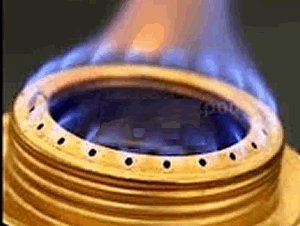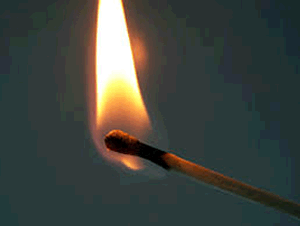for junior science

A combustion reaction is a type of chemical reaction, commonly referred to as burning, where a fuel combines with oxygen from the air to produce heat and gaseous products. Common combustion reactions involve the burning of wood and other types of fuels. The products from combustion reactions are usually carbon dioxide and water. Combustion reactions are also referred to as exothermic reactions, because of the release of heat and occur at a relatively rapid rate.
Combustion reactions involve a fuel and an oxidant. Although the oxidant is usually oxygen from the air, it doesn't have to be and sulfur or fluorine can also be used as powerful oxidants.
All of us are familiar with the burning of wood. When an organic substance, generally composed of carbon and hydrogen as in the case of a fossil fuel, burns in oxygen, water and carbon dioxide are produced according to the chemical equation below.
Fuel + oxygen --> Water + carbon dioxide

Not only do organic substances burn with oxygen to produce heat but metals can also burn in oxygen to produce heat. Some examples are :
- sparklers
- thermite reaction as used in the solid fuel boosters to launch the Space Shuttle.
- slow rusting. The heat released when a metal, like iron, rusts slowly is not always obvious as in the case of sparklers and the Shuttle boosters.

When wood is burnt the remaining solid product (ash) is lighter than the wood. If we put a match on a set of scales and lit it we would notice the mass of the match decreasing.
Does this mean that mass was destroyed?
No! Since the products are carbon dioxide and water they escape into he atmosphere leaving just the carbon ash behind. When iron rusts in oxygen the mass of the product is greater than the iron initially present.
When there is limited amount of oxygen incomplete combustion takes place and the products are carbon monoxide and water. Carbon monoxide (CO) is very dangerous.

Does this mean that mass was created?
No! Since the product of rusting involves the formation of solids made up of the metal and oxygen bound to each other the product appears heavier than the original metal. This is because oxygen is now attached to the metal to form what we generally call rust.
1) Something that can burn is often called a combustible material.
Which of the following is not a combustible material?
2) A fuel needs the presence of to combust .
3) Which of the following can be described as an oxidant?
4) Which of the following is the word equation for the combustion of ethane (C2H6)?
5) Combustion reactions are major source of heat energy. Which of the following activities do not require the heat energy from a combustion reaction?
6) Label the following True or False.
a) Flames are always seen during a combustion reaction.
b) If a flame is brought close to a piece of paper in space where there is no atmosphere it will catch on fire but will burn slowly.c) A candle is placed in a closed vessel and lit, the flame is extinguished after a short time due to the lack of carbon dioxide present in the vessel.
d) A car runs on petrol and oxygen from the air. Petrol is the oxidant while oxygen from the air is the fuel.